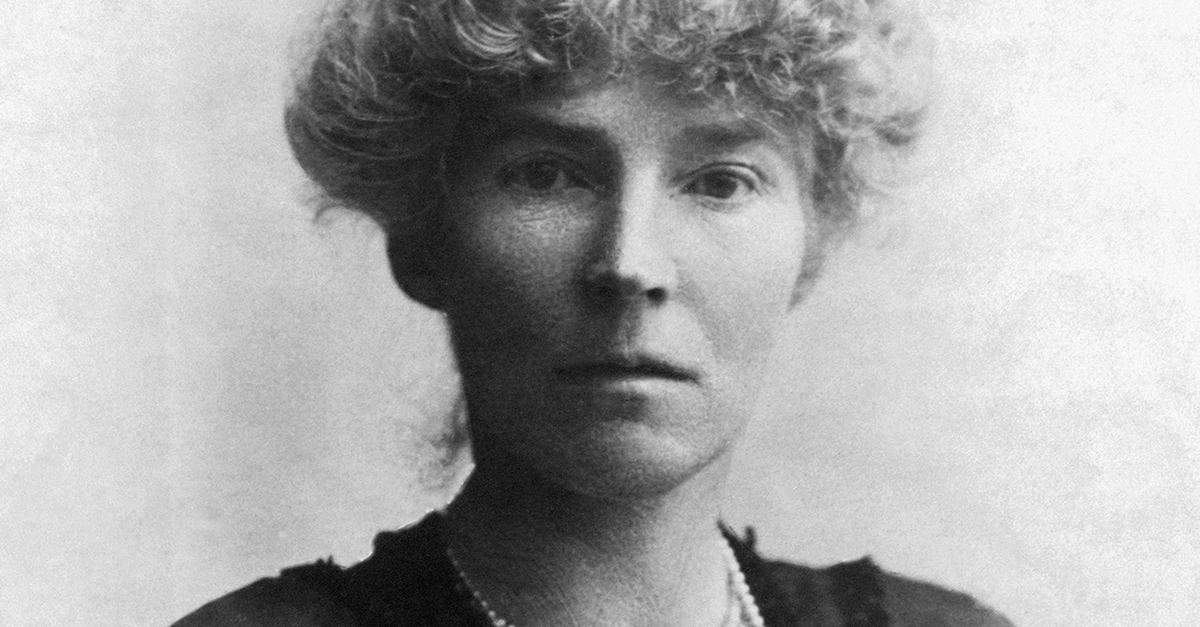These Natural Disasters Caused Unbelievable Death Tolls
From the 1931 China floods to the 2010 Haiti earthquake, these are the world's deadliest natural disasters—and the details are not for the faint of heart.

The China Floods Of 1931
The death toll for the China Floods of 1931 is the highest in history—a devastating estimate of 4 million. But the disaster was many years in the making.
The China Floods Of 1931: An Extreme Winter
It all began with a long drought that lasted from 1928 to 1930. Then the winter leading into 1931 resulted in a build-up of snow and ice in the mountains. This would lead to a spring season straight out of a horror story.
 Unknown Author, Wikimedia Commons
Unknown Author, Wikimedia Commons
The China Floods Of 1931: Heavy Rain
When the large amount of snow and ice melted at the beginning of the year, it flowed into the middle of the Yangtze River. However, something else was different about that year.
 Isabella Lucy Bird, Wikimedia Commons
Isabella Lucy Bird, Wikimedia Commons
The China Floods Of 1931: High Water Levels
There were heavy rains, with the period of high water lasting far longer than usual, with no respite. Little did anyone know, this was just the calm before the storm.
 Unknown Author, CC BY 4.0, Wikimedia Commons
Unknown Author, CC BY 4.0, Wikimedia Commons
The China Floods Of 1931: They Abandoned Their Homes
By the time June rolled around, unlucky citizens living in the low areas had no choice but to leave their homes. The flooding had officially begun. However, the very next month, the cyclones began.
 Bundesarchiv, Bild, CC-BY-SA 3.0, Wikimedia Commons
Bundesarchiv, Bild, CC-BY-SA 3.0, Wikimedia Commons
The China Floods Of 1931: Cyclones
On average, China endured around two cyclones every year. But in 1931? They experienced seven in July alone. The floods wreaked unimaginable havoc on the country, including major cities like Wuhan and Nanjing. They covered approximately 180,000 square kilometers.
 Topical Press Agency, Getty Images
Topical Press Agency, Getty Images
The China Floods Of 1931: The Dike Breached
The horrifying floods lasted from June to August, meeting a horrifying climax on August 25, 1931, with the dike breach along Lake Gaoyou. The cost of human life was deeply disturbing.
The China Floods Of 1931: They Affected Millions
According to historians, the number of people affected by the disaster was an estimated 53 million. However, several sources have since reported varying death tolls.
 Pictures from History, Getty Images
Pictures from History, Getty Images
The China Floods Of 1931: The Shocking Death Toll
One study suggests that 150,000 people drowned during the floods, while the resulting starvation and disease accounted for hundreds of thousands on top of that number. However, Western sources have placed the number much higher, closer to 4 million.
 Pictures from History, Getty Images
Pictures from History, Getty Images
The China Floods Of 1931: People Starved
The consequences of the floods spread far and wide. Farmland, housing, and essential crops had been obliterated. This affected the economy in a shocking way. The cost of essentials and food skyrocketed, causing people to starve—and the details of this fallout are harrowing.
 Ukendt forfatter, Wikimedia Commons
Ukendt forfatter, Wikimedia Commons
The China Floods Of 1931: They Turned To Cannibalism
People were so desperate, they resorted to eating whatever they could get their hands on, including tree bark and earth. In some extreme cases, some even cannibalized to survive. Others made the heartbreaking decision to sell their own children.
Somehow, this wasn't even the end of it.
The China Floods Of 1931: Diseases Raged Out Of Control
Perhaps the worst part of the disaster was the spread of disease. With so many refugees, the country experienced overcrowding and the sanitation system suffered. Thousands died from diseases like dysentery, malaria, cholera, measles, and schistosomiasis.
 Bundesarchiv, Bild, CC BY-SA 3.0, Wikimedia Commons
Bundesarchiv, Bild, CC BY-SA 3.0, Wikimedia Commons
The Tangshan Earthquake Of 1976
The Tangshan earthquake occurred in the early hours of the morning on July 28, 1976, with a magnitude between 7.8 and 8.2 on the Richter scale. The Chinese city didn't stand a chance.
 Shi Haotian, CC BY 3.0, Wikimedia Commons
Shi Haotian, CC BY 3.0, Wikimedia Commons
The Tangshan Earthquake Of 1976: A Vulnerable Location
Due to its location between the Indian and Pacific plates, earthquakes have been notably prevalent in China. It's no wonder that they were the first country to create working seismometers.
 Dong Chenxing, CC BY-SA 4.0, Wikimedia Commons
Dong Chenxing, CC BY-SA 4.0, Wikimedia Commons
The Tangshan Earthquake Of 1976: Warning Signs
There were certainly warning signs before the earthquake hit. Days before the disaster, people began to notice some bizarre occurrences in the area.
 Dong Chenxing, CC BY-SA 4.0, Wikimedia Commons
Dong Chenxing, CC BY-SA 4.0, Wikimedia Commons
The Tangshan Earthquake Of 1976: The Animals Behaved Strangely
Water levels in wells fluctuated dramatically. But perhaps most startlingly, the animals' behaviors changed. Chickens stopped eating their food, while rats began running around in broad daylight, seemingly distressed.
 Dong Chenxing, CC BY-SA 4.0 , Wikimedia Commons
Dong Chenxing, CC BY-SA 4.0 , Wikimedia Commons
The Tangshan Earthquake Of 1976: Strange Lights
Hours before the earthquake rocked Tangshan, people witnessed strange flashing lights and "roaring fireballs." But at 3:42 am, the nightmare began.
 Tiansworldathere, CC BY-SA 3.0, Wikimedia Commons
Tiansworldathere, CC BY-SA 3.0, Wikimedia Commons
The Tangshan Earthquake Of 1976: Bad Timing
The citizens of Tangshan had gone to sleep the night before, blissfully unaware of the nightmare destined to strike them. However, the timing of the earthquake doomed them as they would have been far safer out on the streets than inside their homes.
 Universal History Archive, Getty Images
Universal History Archive, Getty Images
The Tangshan Earthquake Of 1976: It Only Lasted 23 Seconds
The earthquake was swift but utterly catastrophic. It only took 23 seconds to flatten 90 percent of the city's buildings. Around 250,000 people lost their lives, while 160,000 suffered injuries.
The Tangshan Earthquake Of 1976: They Were Blindsided
Because it had been a sweltering midsummer night, many of those who survived the earthquake emerged from the wreckage of their homes completely unclothed and bloody.
 China Film Group Corporation, Aftershock (2010)
China Film Group Corporation, Aftershock (2010)
The Tangshan Earthquake Of 1976: Fires Erupted
All over the city, there were fires. The earthquake caused explosions in the city's factories due to the ignition of toxic gases and explosives. But there were more horrors in store.
 China Film Group Corporation, Aftershock (2010)
China Film Group Corporation, Aftershock (2010)
The Tangshan Earthquake Of 1976: The Government Failed Them
Tragically, the Chinese government's reaction to the disaster was deeply disappointing. They simply were not prepared for such a destructive earthquake.
 China Film Group Corporation, Aftershock (2010)
China Film Group Corporation, Aftershock (2010)
The Tangshan Earthquake Of 1976: It Wasn't Enough
Though they sent in 100,000 soldiers, 30,000 medics, and 30,000 construction workers, it wasn't enough. To add insult to injury, they made the chilling decision to refuse any foreign aid. They wanted to prove that the country was strong enough to handle the situation on its own, but it was the people who paid the ultimate price.
 Dong Chenxing, CC BY-SA 4.0, Wikimedia Commons
Dong Chenxing, CC BY-SA 4.0, Wikimedia Commons
The Tangshan Earthquake Of 1976: They Needed More Medical Aid
In the week that followed the earthquake, many injured survivors didn't receive the medical treatment they needed and perished. On top of this, the troops and workers attempting to rescue folks from the wrecked buildings weren't properly trained.
 Dong Chenxing, CC BY-SA 4.0, Wikimedia Commons
Dong Chenxing, CC BY-SA 4.0, Wikimedia Commons
The Tangshan Earthquake Of 1976: Orphaned And Homeless
The death toll was staggering—an estimated 242,000. However, some sources believe that it was much higher, closer to 500,000. Additionally, 4,000 children lost both their parents, while 160,000 families wound up homeless.
 Universal History Archive, Getty Images
Universal History Archive, Getty Images
The Bhola Cyclone Of 1970
In 1970, a tropical cyclone wreaked havoc in East Pakistan (known as Bangladesh today). It earned the name "the Great Cyclone of 1970" for a reason.
The Bhola Cyclone Of 1970: The Deadliest Of All Time
The 1970 Bhola cyclone is still the deadliest on record, with an estimated 500,000 fatalities. However, the details of the disaster are not for the faint of heart.
 Express Newspapers, Getty Images
Express Newspapers, Getty Images
The Bhola Cyclone Of 1970: The Calm Before The Storm
Originating over the Bay of Bengal on November 8, the cyclone grew stronger as it moved northward. By November 10, the winds had reached a terrifying 185 km/h. The consequences of the storm were devastating.
 Ed g2s, CC BY-SA 3.0, Wikimedia Commons
Ed g2s, CC BY-SA 3.0, Wikimedia Commons
The Bhola Cyclone Of 1970: It Wiped Out Everything
As the cyclone reached land, it annihilated villages, offshore islands, and crops. Tazumuddin endured the brunt of the storm, with close to half of its population losing their lives.
 Express Newspapers, Getty Images
Express Newspapers, Getty Images
The Bhola Cyclone Of 1970: No Proper Warning
Sadly, it seemed as though most of the population was completely blindsided by the cyclone. This caused many to criticize East Pakistan's storm warning system, which hadn't done a good enough job of alerting the public.
 Express Newspapers, Getty Images
Express Newspapers, Getty Images
The Bhola Cyclone Of 1970: It Affected Millions
The cyclone changed 3.6 million lives for the worse. According to the survivors, it wiped out around 85% of the homes, especially those along the coast. The fishermen, in particular, suffered horrifying losses.
The Bhola Cyclone Of 1970: The Loss Of Fishermen
Not only were 9,000 fishing boats destroyed, but 46,000 fishermen perished—and in the wake of the depleted fishing capacity, the surviving workers struggled. Similarly, the agriculture industry saw the loss of 280,000 cattle, as well as millions of dollars worth of crops. This caused some serious problems.
The Bhola Cyclone Of 1970: They Couldn't Find Food
Even three months after the cyclone, the people struggled to feed themselves. 75% of people relied on relief workers for sustenance. But this was just the tip of the iceberg.
The Bhola Cyclone Of 1970: Contaminated Water
The storm also contaminated the region's water supply, causing the spread of diseases like cholera and typhoid. This caused a severe delay in necessary medical aid.
The Bhola Cyclone Of 1970: It Influenced The Political Landscape
The cyclone had far-reaching consequences and contributed to the fate of the 1970 Pakistani general election. As the disaster had been handled so poorly, leftist parties boycotted the election, leading to the victory of The Awami League.
 Unknown Author, Wikimedia Commons
Unknown Author, Wikimedia Commons
The Bhola Cyclone Of 1970: It Led To Genocide
The pitiful relief efforts enraged those affected in East Pakistan, which fed the resistance movement. These were just some of the seeds leading to the devastating Bangladesh genocide in 1971, which resulted in an estimated death toll of 300,000 to 3 million.
 Prof. Rafiqul Islam, Wikimedia Commons
Prof. Rafiqul Islam, Wikimedia Commons
The Haiti Earthquake Of 2010
The earthquake that hit Haiti in 2010 caused so much damage that the entire world took notice and reached out with aid. Tragically, there's good reason to believe that the small country still hasn't fully recovered.
 Marco Dormino, CC BY 2.0, Wikimedia Commons
Marco Dormino, CC BY 2.0, Wikimedia Commons
The Haiti Earthquake Of 2010: It Was A Hotspot
Throughout history, Haiti has been a hotspot for seismic activity. Major earthquakes hit the country in 1751, 1770, 1842, and 1946. It was practically inevitable for another one to eventually occur.
 Trocaire, CC BY 2.0, Wikimedia Commons
Trocaire, CC BY 2.0, Wikimedia Commons
The Haiti Earthquake Of 2010: The Capital Sat On A Fault Line
Port-au-Prince, the capital of Haiti, basically sits on a fault line. Seismologists had issued warnings for the area, but the nation's Achilles' heel was its shocking poverty. They just couldn't afford to strengthen their infrastructure—and they were not prepared for a natural disaster.
The Haiti Earthquake Of 2010: Countless Aftershocks
When the 7.0-magnitude earthquake hit on January 12, 2010, it was almost 5 pm—but eight aftershocks followed, as well as 52 over the coming weeks. It caused unbelievable chaos.
 EU Civil Protection and Humanitarian Aid, Flickr
EU Civil Protection and Humanitarian Aid, Flickr
The Haiti Earthquake Of 2010: Destroyed Hospitals
Port-au-Prince suffered a terrible blow, with all of its medical centers severely damaged. This included every hospital, as well as three Doctors Without Borders facilities. Additionally, the airport and seaport were no longer operational. But that wasn't all.
The Haiti Earthquake Of 2010: The Obliteration Of Beautiful Buildings
The earthquake destroyed 300,000 buildings and rendered the roadways useless. Even gorgeous architectural landmarks like the Port-au-Prince Cathedral and The National Palace met sad ends. Still, this was nothing compared to the loss of precious human lives.
The Haiti Earthquake Of 2010: The Loss Of Human Life
The estimated death toll caused by the earthquake ranges from 40,000 to over 316,000. The disaster also displaced close to one million people. The images coming out of Haiti were deeply disturbing—and caused other countries to take action and offer humanitarian aid.
 TSgt. James L. Harper, Wikimedia Commons
TSgt. James L. Harper, Wikimedia Commons
The Haiti Earthquake Of 2010: Immediate Help
The first to respond to the tragedy was the Dominican Republic and the Dominican Red Cross. They provided emergency supplies and airlifted victims to hospitals. However, they certainly weren't the only ones moved to action.
 Daniel Barker, Wikimedia Commons
Daniel Barker, Wikimedia Commons
The Haiti Earthquake Of 2010: Raising Millions
America's and Great Britain's air forces swooped in to transport survivors to hospital ships, while other nations sent money and manpower. Additionally, on January 22 the "Hope for Haiti" telethon raised a jaw-dropping $58 million for the cause.
The Haiti Earthquake Of 2010: A Boken Infrastructure
However, despite the swift response from other nations, Haiti had trouble managing all the help and struggled to deliver aid. An emergency was still in effect half a year later. People were still in dire straits.
 Logan Abassi, CC BY 2.0, Wikimedia Commons
Logan Abassi, CC BY 2.0, Wikimedia Commons
The Haiti Earthquake Of 2010: A Cholera Epidemic
Displaced victims of the earthquake lived in tents—millions of them. To add insult to injury, disease spread like wildfire, and in October of that year, a cholera epidemic caused 3,300 fatalities.
For the next 10 years, Haiti embarked on a long, slow crawl toward a semblance of normalcy.
 Cpl. Theodore W. Ritchie, Wikimedia Commons
Cpl. Theodore W. Ritchie, Wikimedia Commons
The Coringa Cyclone Of 1839
The 1839 Coringa cyclone has multiple names—and has also been called the 1839 India cyclone or the 1839 Andhra Pradesh cyclone. It hit the southeastern coast of British India on November 25, 1839. But this wasn't the first time the area had faced a destructive storm.
 Monsters and Critics, Wikimedia Commons
Monsters and Critics, Wikimedia Commons
The Coringa Cyclone Of 1839: This Wasn't The First Time
Back in 1789, the region experienced losses of over 20,000 people as a result of another cyclone. However, though the storm surges and floods caused serious damage, the port city of Coringa recovered—its harbor becoming a prosperous hub of activity.
Sadly, this only foreshadowed its darker future.
 Sreeja sadineni84, CC BY-SA 4.0, Wikimedia Commons
Sreeja sadineni84, CC BY-SA 4.0, Wikimedia Commons
The Coringa Cyclone Of 1839: In Second Place
In 1839, Coringa faced yet another tropical cyclone and emerged in tatters—its harbor completely demolished. The storm comes second only to the notorious Bhola cyclone previously mentioned.
 EU Civil Protection and Humanitarian Aid, Flickr
EU Civil Protection and Humanitarian Aid, Flickr
The Coringa Cyclone Of 1839: Damaged Beyond Repair
More than 300,000 people lost their lives to the cyclone. Flooding bodies of water washed away homes, ruined 200,000 ships, submerged crops, and drowned animals. The extensive damage sealed the city's sad fate.
 Astronaut photograph, Wikimedia Commons
Astronaut photograph, Wikimedia Commons
The Coringa Cyclone Of 1839: They Abandoned The "Cursed City"
Tragically, there was no silver lining for Coringa. Those who survived decided to leave the "cursed city" altogether, squashing any hope of rebuilding the obliterated port.
The Coringa Cyclone Of 1839: Hope Island
Instead, some survivors chose to establish a new community further inland. Quite fittingly, British officials called this area Hope Island.
The Coringa Cyclone Of 1839: The Coils Of A Snake
Interestingly enough, it was Henry Piddington—a British East India Company official—who used the term "cyclone" for the first time when describing the cyclones of 1789 and 1839. The word "cyclone" comes from the Greek word "cyclos," which means "the coils of a snake."
 Colesworthey Grant, Wikimedia Commons
Colesworthey Grant, Wikimedia Commons
The Haiyuan Earthquake Of 1920
On December 16, 1920, a chilling earthquake became Haiyuan County's worst nightmare—and based on the high death toll, it's considered one of China's deadliest natural disasters.
The Haiyuan Earthquake Of 1920: Hundreds Of Thousands
The estimated magnitude of the earthquake was 8.5 (a likely exaggerated number), while the cost of human life was an estimated 258,707 to 273,407 people. The destruction was unfathomable.
 Formosa Vintage Museum, Wikimedia Commons
Formosa Vintage Museum, Wikimedia Commons
The Haiyuan Earthquake Of 1920: Widespread Damage
In Haiyuan County, 73,000 people died—but this was only one slice of the losses. The village of Sujiahe fell victim to a landslide and Guyuan County saw losses of over 30,000. In Longde and Huining, the earthquake wiped out almost every house. And, of course, the damage spread outward to many other cities.
 shannabian, CC BY 3.0, Wikimedia Commons
shannabian, CC BY 3.0, Wikimedia Commons
The Haiyuan Earthquake Of 1920: The Cold Killed Them
Tragically, many people lost their lives to something other than the earthquake itself—the frigid temperatures. But why did so many die from the biting cold?
 Unknown author, Wikimedia Commons
Unknown author, Wikimedia Commons
The Haiyuan Earthquake Of 1920: The Aftershocks Doomed Them
For three years, the aftershocks continued, causing many of the survivors to refrain from building new homes... This had fatal consequences.
The Haiyuan Earthquake Of 1920: A Harsh Winter
Instead of constructing permanent residences, many folks opted for temporary shelters. Horrifyingly, when an extremely harsh winter descended on the survivors, many of them perished.

























